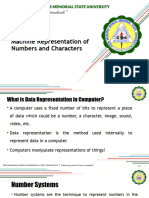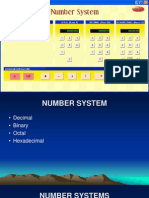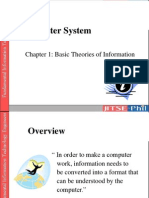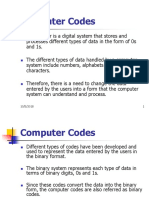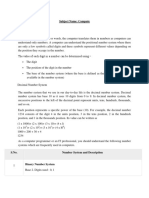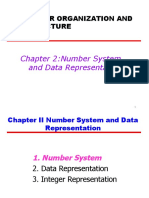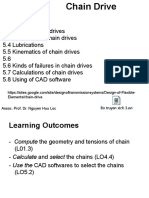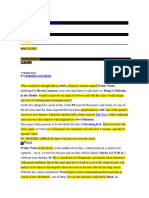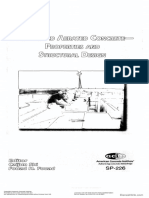0% found this document useful (0 votes)
406 views28 pages1.2 Number System Student Lecture Notes
The document discusses number representation in computers. It covers binary, bits, bytes and how computers use binary to represent data. It also discusses converting between decimal and binary numbers as well as hexadecimal representation.
Uploaded by
HAMSIAH BINTI BEN MoeCopyright
© © All Rights Reserved
We take content rights seriously. If you suspect this is your content, claim it here.
Available Formats
Download as PDF, TXT or read online on Scribd
0% found this document useful (0 votes)
406 views28 pages1.2 Number System Student Lecture Notes
The document discusses number representation in computers. It covers binary, bits, bytes and how computers use binary to represent data. It also discusses converting between decimal and binary numbers as well as hexadecimal representation.
Uploaded by
HAMSIAH BINTI BEN MoeCopyright
© © All Rights Reserved
We take content rights seriously. If you suspect this is your content, claim it here.
Available Formats
Download as PDF, TXT or read online on Scribd
/ 28



